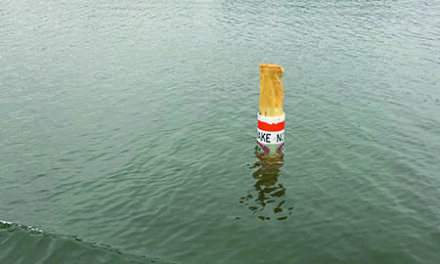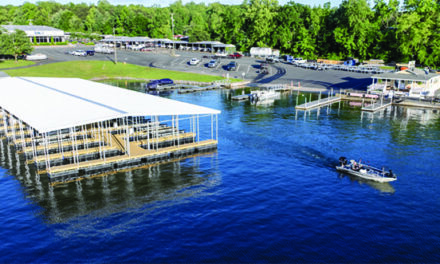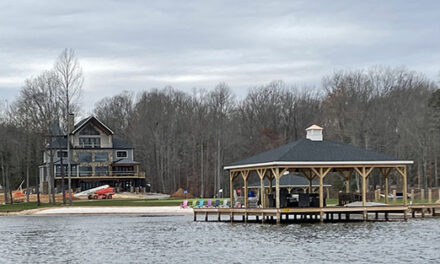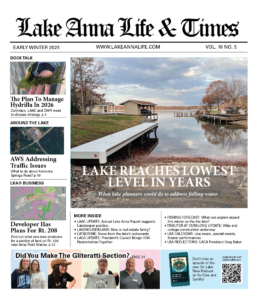At the May 22 meeting of the Lake Anna Advisory Committee members of the Virginia Department of Environmental Quality (VDEQ) and Virginia Department of Health (VDH) told members of a change in the way the agencies will test for and warn the public about algae blooms on Lake Anna.
“We are no longer using cell counts for recreational advisories. We are using toxin counts,” Danielle Schools, Division of Shellfish Safety and Waterborne Hazards Division Director for the VDH told LAAC at the meeting.
When asked why the testing procedure was changed, Schools noted, “There is no correlation between cell counts and toxins. Toxins are where the risks are. Nineteen other states are using toxin counts, testing for four toxins.”
Toxins are released by certain strains of algae and can cause various illness when people come in contact with them in water. The toxins tested for include microcystins, cylindrospermopsin, anatoxin-a and saxitoxin. Advisories would be recommended if certain concentrations of micrograms per liter were exceeded.
Prior to 2025, DEQ and VDH monitored both the concentration of blue-green algae (known as cell counts) and the concentration of toxins in water samples. When cell counts exceeded 100,000 cells per milliliter (mL) of water, or when toxin concentrations exceeded certain thresholds, VDH issued advisories recommending that the public avoid swimming and other activities that pose a risk of ingesting water. Schools made sure to note that advisories are not closures—they are recommendations, but don’t prohibit swimming in a waterbody under an advisory.
LAAC Chair Christopher C. McCotter asked LAAC Environmental/Water Quality Subcommittee Chair and fellow LAAC representative Harry Looney if he thought this might mean fewer if any harmful algae bloom advisories for Lake Anna.
Looney responded by noting: “Lake Anna has never had toxin levels high enough to trigger an advisory.”
Spotsylvania Supervisor Kevin Marshall, a member of LAAC asked rhetorically if perhaps this change didn’t originate in the Governor’s office. Schools did not offer comment.
Schools did note that if Lake Anna had an HAB advisory this summer it would be something to heed, noting that she is an avid kayaker and checks advisories on the James River and other waters before she visits.
“If there is an advisory, there are toxins present and you should not go into the water.”
Also presenting at the LAAC meeting was Justin Lloyd, Water Quality Monitoring Supervisor of the VDEQ.
Llyod and the DEQ conduct the water sampling at the lake. He showed maps indicating the nine routine and HAB testing sites planned for 2025 April through October. Both surface and bottom sampling will occur at many sites, all above the Rt. 208 bridge except for one at the dam. The surface vs. bottom sampling will help determine where the excess nutrients are concentrated that algae feeds on in the lake. Lloyd noted it takes an average of approximately 2.5 hours to collect all the samples around the lake.
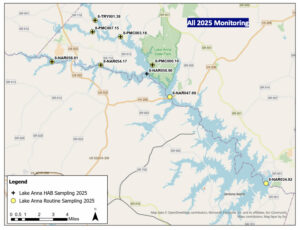
This year, Lloyd and his team of technicians will also be sampling and testing for bacteria in the lake, specifically fecal coliform and enterococci bacteria.
McCotter asked Schools what the VDH plans to do should testing reveal elevated levels of bacteria in the lake.
“We have no mandate to issue any freshwater bacteria advisories,” she told the group. Schools suggested LACA devise a notification system of green, yellow and red to update lake users.
“What happens if someone gets sick on a green level?” Looney asked but did not receive an answer.
McCotter and Marshall both noted it was highly unlikely their respective counties could or would issue such advisories.
As of May 27, there had been and were not any HAB advisories at Lake Anna though algae blooms had been observed. Testing will continue every two weeks and Lloyd noted lab results turnaround time would be much shorter this year as DEQ would be using a courier service instead of the mail.
The Lake Anna Civic Association Water Quality Monitoring team of volunteers will also assist the DEQ with water sampling. LACA receives $10,000 per year from both Louisa and Spotsylvania Counties intended to help cover the cost of this sampling and lab costs.
Also, at the May LAAC meeting, members agreed to post a request for proposal for contractors interested in monitoring and treating nutrient levels in all three branches of the lake in 2025. The group has $750K earmarked from the Virginia General Assembly for mitigation of harmful algae blooms and the nutrients that cause them at the lake.
Looney had three phosphorus remediation options for LAAC members to consider: 1) focus on continuous monitoring on all three Lake Anna tributaries to create data set of phosphorus inflows from external loading and use remaining funds, if any to continue sediment treatment, 2) conduct remediation in one of the upper lake tributaries using an injection system and sediment treatments and 3) hold funding for an early 2026 start.
McCotter asked Looney if LAAC could create an RFP that included monitoring, injection system treatment and sediment treatment in all three tributaries.
Looney made a motion to do so, seconded by Marshall and the group voted unanimously to work with Louisa County staff to craft such an RFP for release in early June.
LAAC has already paid for a $40k plus study on the upper lake by Solitude Lake Management to determine where the excess phosphorus is originating (inflow and existing sources) as well as awarded nearly $1 million last year to two different contractors to reduce phosphorus levels in the upper North Anna and Terry’s Run by 10%, which was successfully accomplished by December 2024.
LAAC was part of a DEQ Pay For Results non-point source nutrient reduction grant application with EutroPHIX however EutroPHIX did not receive an award.
Lake Anna Life’s Facebook page is a source of any VDH issued advisory for the lake and will post any updates when received. Lake residents and visitors can also visit https://www.vdh.virginia.gov/waterborne-hazards-control/safe-swimming/ for updates.


